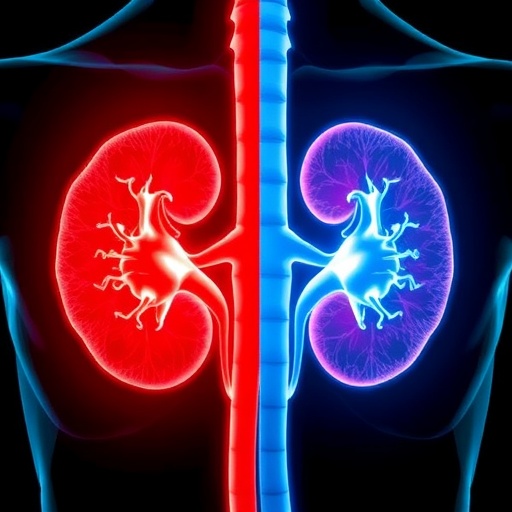A UCLA study characterizes, for the first time, brain differences between people with a specific genetic risk for schizophrenia and those at risk for autism, and the findings could help explain the biological underpinnings of these neuropsychiatric disorders.
The research, published May 23 in the Journal of Neuroscience, sheds light on how an excess, or absence, of genetic material on a particular chromosome affects neural development.
"Notably, the opposing anatomical patterns we observed were most prominent in brain regions important for social functioning," said Carrie Bearden, lead author of the study and a professor of clinical psychology at UCLA. "These findings provide clues into differences in brain development that may predispose to schizophrenia or autism."
Bearden's earlier research had focused on children with abnormalities caused by missing sections of genetic material on chromosome 22, in a location known as 22q11.2. The disorder, called 22q11.2-deletion syndrome, can cause developmental delays, heart defects and distinct facial features. It also confers the highest-known genetic risk for schizophrenia.
Then she learned that people with 22q duplication — abnormal repetition, or duplication, of genetic material in chromosome 22 — had learning delays and sometimes autism, but a lower risk for schizophrenia than that found in the general population. In other words, duplication of genetic material in this region seemed to provide some protection against schizophrenia.
For the current study, Bearden, who is part of the UCLA Semel Institute for Neuroscience and Human Behavior, conducted MRI scans of 143 study participants: 66 with 22q deletions, 21 with 22q duplications, and 56 without the genetic mutation.
Those in the group with 22q deletion, which carries the risk for schizophrenia, had thicker gray matter, but less brain surface area — a measure which relates to how folded the brain is — compared to those in the duplication group. The people in the 22q duplication group, who at risk for autism, had the opposite pattern, with thinner gray matter and larger brain surface area.
"The next question is how does brain anatomy — and brain function — relate to psychiatric outcomes? These findings provide a snapshot," Bearden said. "We are now conducting follow-up studies to track predictors of outcome over time. Those are the puzzle pieces that are next on our list to disentangle."
These structures are not sole determinants of schizophrenia or autism, Bearden said, but rather, more dots in the connect-the-dots puzzle of understanding these disorders. Observing this group of people over time could provide insights on how other risk factors or life events, such as puberty, affect the mind.
Bearden says she and her team are collaborating with other scientists to investigate brain structural differences in animal models, to find out what causes them at the cellular level.
###
The study's first author is Amy Lin, a doctoral student in the UCLA neuroscience program. Other authors are Ariana Vajdi, Daqiang Sun, Rachel Jonas, Leila Kushan-Wells, Laura Pacheco Hansen, Emma Krikorian, Deepika Dokuru, Gerhard Helleman, all of UCLA; Maria Jalbrzikowski of the University of Pittsburgh Medical Center; Paul Thompson and Boris Gutman of USC; and Christopher Ching of UCLA and USC.
The research was funded by the Simons Foundation, the National Institute of Mental Health (RO1 MH085953), and a Neurobehavioral Genetics Predoctoral Training Grant (5T32MH073526).
Media Contact
Leigh Hopper
[email protected]
310-267-7149
@uclanewsroom
http://www.newsroom.ucla.edu
############
Story Source: Materials provided by Scienmag




